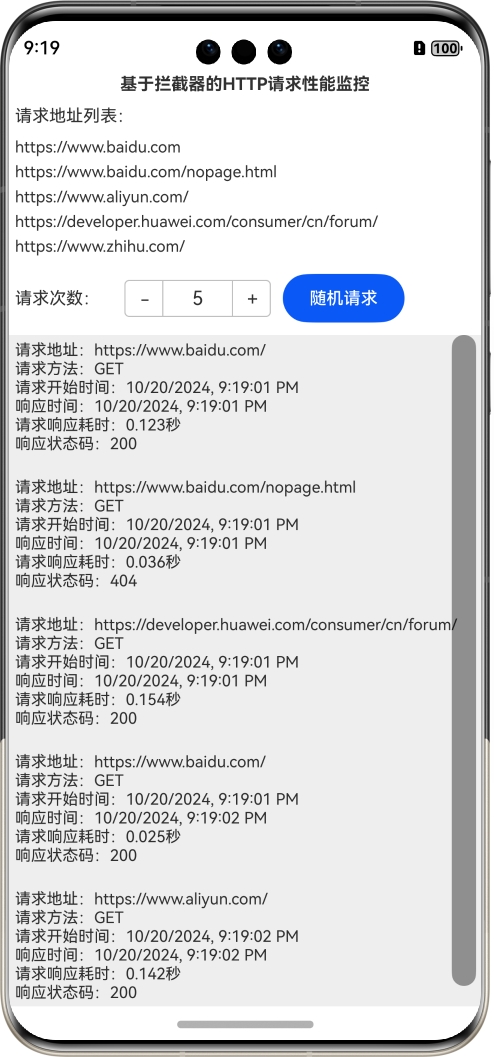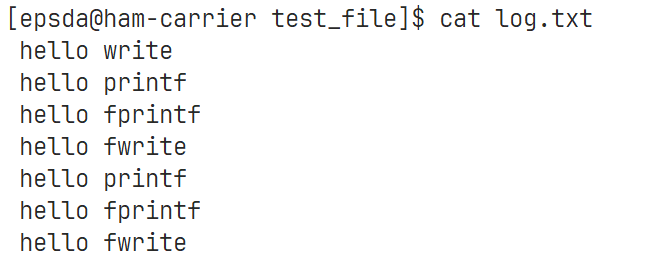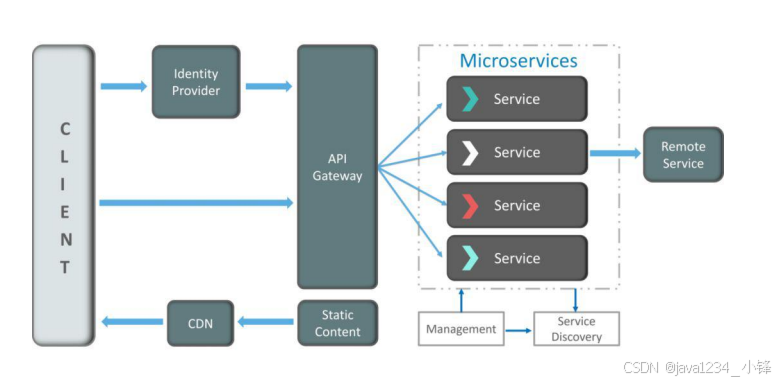本篇文章将介绍一个新的改进机制——WTConv(小波卷积),并阐述如何将其应用于YOLOv11中,显著提升模型性能。YOLOv11模型相比较于前几个模型在检测精度和速度上有显著提升,但其仍然受卷积核感受野大小的限制。因此,我们引入了小波卷积模块,旨在扩大卷积的感受野并有效捕捉图像中的低频信息。其对多尺度问题和小目标问题上有很好的效果。
首先,我们将解析WTConv的工作原理,它通过小波变换将输入图像分解为不同的频率成分,并在每个频率层上进行小尺寸卷积,最后通过逆小波变换将结果重新组合,从而实现对图像的多尺度分析。随后,我们会详细说明如何将该模块与YOLOv11相结合,展示代码实现细节及其使用方法,最终展现这一改进对目标检测效果的积极影响。
1. Wavelet Convolutions(WTConv)结构介绍
1. 首先,WTConv利用二维Haar小波变换对输入图像进行多级分解。Haar小波变换使用四个滤波器,将图像分解为四个子带:低频分量 (LL):捕捉图像的低频信息,如整体形状或轮廓。水平高频分量 (LH):捕捉图像中的水平边缘信息。垂直高频分量 (HL):捕捉图像中的垂直边缘信息。对角线高频分量 (HH):捕捉图像的对角线细节。在每一级的小波变换中,图像被下采样(空间分辨率减半),但频率信息得到了更细的分解。递归地执行小波变换(称为多级分解)可以得到不同尺度下的频率分量。
2. 在WTConv中,卷积并非直接在原始输入图像上进行,而是分别在每个频率子带上应用小尺寸的深度卷积核。通常使用3x3或5x5的小卷积核,对分解后的各个子带进行卷积操作。由于小波变换降低了每个子带的空间分辨率,小尺寸的卷积核可以覆盖更大的原始图像区域,即感受野增大。
低频子带 (LL) 主要包含了图像的大尺度信息,因此在其上应用卷积有助于捕捉全局的特征。
高频子带 (LH, HL, HH) 则包含局部边缘和细节信息,卷积操作可以捕捉这些细节。
3. 在完成卷积后,使用逆小波变换(Inverse Wavelet Transform, IWT)将各个子带的卷积结果重新合成为一个完整的输出。这一过程类似于将不同频率层次的特征融合在一起。值得注意的是,IWT操作是线性的,因此可以无损地将卷积结果重构到原始空间。

2. YOLOv11与WTConv的结合
1. 改进C3k2:本文使用WTConv卷积改进C3k2,构建C3k2_WT模块,然后使用C3k2_WT替换原有的C3k2,这样就可以利用WTConv扩大模型的感受野。
2. 在head中使用DSConvWithWT卷积:本文使用WTConv卷积构建DSConvWithWT深度可分离卷积,然后将它替换head中的深度可分离卷积,扩大head层的感受野。
3. Wavelet Convolutions(WTConv)代码部分
import pywt
import pywt.data
import torch
from torch import nn
from functools import partial
import torch.nn.functional as F
from .conv import Conv
from .block import C2f, C3, Bottleneck
def create_wavelet_filter(wave, in_size, out_size, type=torch.float):
w = pywt.Wavelet(wave)
dec_hi = torch.tensor(w.dec_hi[::-1], dtype=type)
dec_lo = torch.tensor(w.dec_lo[::-1], dtype=type)
dec_filters = torch.stack([dec_lo.unsqueeze(0) * dec_lo.unsqueeze(1),
dec_lo.unsqueeze(0) * dec_hi.unsqueeze(1),
dec_hi.unsqueeze(0) * dec_lo.unsqueeze(1),
dec_hi.unsqueeze(0) * dec_hi.unsqueeze(1)], dim=0)
dec_filters = dec_filters[:, None].repeat(in_size, 1, 1, 1)
rec_hi = torch.tensor(w.rec_hi[::-1], dtype=type).flip(dims=[0])
rec_lo = torch.tensor(w.rec_lo[::-1], dtype=type).flip(dims=[0])
rec_filters = torch.stack([rec_lo.unsqueeze(0) * rec_lo.unsqueeze(1),
rec_lo.unsqueeze(0) * rec_hi.unsqueeze(1),
rec_hi.unsqueeze(0) * rec_lo.unsqueeze(1),
rec_hi.unsqueeze(0) * rec_hi.unsqueeze(1)], dim=0)
rec_filters = rec_filters[:, None].repeat(out_size, 1, 1, 1)
return dec_filters, rec_filters
def wavelet_transform(x, filters):
b, c, h, w = x.shape
pad = (filters.shape[2] // 2 - 1, filters.shape[3] // 2 - 1)
x = F.conv2d(x, filters, stride=2, groups=c, padding=pad)
x = x.reshape(b, c, 4, h // 2, w // 2)
return x
def inverse_wavelet_transform(x, filters):
b, c, _, h_half, w_half = x.shape
pad = (filters.shape[2] // 2 - 1, filters.shape[3] // 2 - 1)
x = x.reshape(b, c * 4, h_half, w_half)
x = F.conv_transpose2d(x, filters, stride=2, groups=c, padding=pad)
return x
# Wavelet Transform Conv(WTConv2d)
class WTConv2d(nn.Module):
def __init__(self, in_channels, out_channels, kernel_size=5, stride=1, bias=True, wt_levels=1, wt_type='db1'):
super(WTConv2d, self).__init__()
assert in_channels == out_channels
self.in_channels = in_channels
self.wt_levels = wt_levels
self.stride = stride
self.dilation = 1
self.wt_filter, self.iwt_filter = create_wavelet_filter(wt_type, in_channels, in_channels, torch.float)
self.wt_filter = nn.Parameter(self.wt_filter, requires_grad=False)
self.iwt_filter = nn.Parameter(self.iwt_filter, requires_grad=False)
self.wt_function = partial(wavelet_transform, filters=self.wt_filter)
self.iwt_function = partial(inverse_wavelet_transform, filters=self.iwt_filter)
self.base_conv = nn.Conv2d(in_channels, in_channels, kernel_size, padding='same', stride=1, dilation=1,
groups=in_channels, bias=bias)
self.base_scale = _ScaleModule([1, in_channels, 1, 1])
self.wavelet_convs = nn.ModuleList(
[nn.Conv2d(in_channels * 4, in_channels * 4, kernel_size, padding='same', stride=1, dilation=1,
groups=in_channels * 4, bias=False) for _ in range(self.wt_levels)]
)
self.wavelet_scale = nn.ModuleList(
[_ScaleModule([1, in_channels * 4, 1, 1], init_scale=0.1) for _ in range(self.wt_levels)]
)
if self.stride > 1:
self.stride_filter = nn.Parameter(torch.ones(in_channels, 1, 1, 1), requires_grad=False)
self.do_stride = lambda x_in: F.conv2d(x_in, self.stride_filter, bias=None, stride=self.stride,
groups=in_channels)
else:
self.do_stride = None
def forward(self, x):
x_ll_in_levels = []
x_h_in_levels = []
shapes_in_levels = []
curr_x_ll = x
for i in range(self.wt_levels):
curr_shape = curr_x_ll.shape
shapes_in_levels.append(curr_shape)
if (curr_shape[2] % 2 > 0) or (curr_shape[3] % 2 > 0):
curr_pads = (0, curr_shape[3] % 2, 0, curr_shape[2] % 2)
curr_x_ll = F.pad(curr_x_ll, curr_pads)
curr_x = self.wt_function(curr_x_ll)
curr_x_ll = curr_x[:, :, 0, :, :]
shape_x = curr_x.shape
curr_x_tag = curr_x.reshape(shape_x[0], shape_x[1] * 4, shape_x[3], shape_x[4])
curr_x_tag = self.wavelet_scale[i](self.wavelet_convs[i](curr_x_tag))
curr_x_tag = curr_x_tag.reshape(shape_x)
x_ll_in_levels.append(curr_x_tag[:, :, 0, :, :])
x_h_in_levels.append(curr_x_tag[:, :, 1:4, :, :])
next_x_ll = 0
for i in range(self.wt_levels - 1, -1, -1):
curr_x_ll = x_ll_in_levels.pop()
curr_x_h = x_h_in_levels.pop()
curr_shape = shapes_in_levels.pop()
curr_x_ll = curr_x_ll + next_x_ll
curr_x = torch.cat([curr_x_ll.unsqueeze(2), curr_x_h], dim=2)
next_x_ll = self.iwt_function(curr_x)
next_x_ll = next_x_ll[:, :, :curr_shape[2], :curr_shape[3]]
x_tag = next_x_ll
assert len(x_ll_in_levels) == 0
x = self.base_scale(self.base_conv(x))
x = x + x_tag
if self.do_stride is not None:
x = self.do_stride(x)
return x
class _ScaleModule(nn.Module):
def __init__(self, dims, init_scale=1.0, init_bias=0):
super(_ScaleModule, self).__init__()
self.dims = dims
self.weight = nn.Parameter(torch.ones(*dims) * init_scale)
self.bias = None
def forward(self, x):
return torch.mul(self.weight, x)
class DSConvWithWT(nn.Module):
def __init__(self, in_channels, out_channels, kernel_size=3):
super(DSConvWithWT, self).__init__()
# 深度卷积:使用 WTConv2d 替换 3x3 卷积
self.depthwise = WTConv2d(in_channels, in_channels, kernel_size=kernel_size)
# 逐点卷积:使用 1x1 卷积
self.pointwise = nn.Conv2d(in_channels, out_channels, kernel_size=1, stride=1, padding=0, bias=False)
def forward(self, x):
x = self.depthwise(x)
x = self.pointwise(x)
return x
class Bottleneck_WT(nn.Module):
"""Standard bottleneck."""
def __init__(self, c1, c2, shortcut=True, g=1, k=(3, 3), e=0.5):
"""Initializes a standard bottleneck module with optional shortcut connection and configurable parameters."""
super().__init__()
c_ = int(c2 * e) # hidden channels
self.cv1 = Conv(c1, c_, k[0], 1)
self.cv2 = WTConv2d(c_, c2)
self.add = shortcut and c1 == c2
def forward(self, x):
"""Applies the YOLO FPN to input data."""
return x + self.cv2(self.cv1(x)) if self.add else self.cv2(self.cv1(x))
class C3k_WT(C3):
"""C3k is a CSP bottleneck module with customizable kernel sizes for feature extraction in neural networks."""
def __init__(self, c1, c2, n=1, shortcut=True, g=1, e=0.5, k=3):
"""Initializes the C3k module with specified channels, number of layers, and configurations."""
super().__init__(c1, c2, n, shortcut, g, e)
c_ = int(c2 * e) # hidden channels
# self.m = nn.Sequential(*(RepBottleneck(c_, c_, shortcut, g, k=(k, k), e=1.0) for _ in range(n)))
self.m = nn.Sequential(*(Bottleneck_WT(c_, c_, shortcut, g, k=(k, k), e=1.0) for _ in range(n)))
# 在c3k=True时,使用Bottleneck_WT特征融合,为false的时候我们使用普通的Bottleneck提取特征
class C3k2_WT(C2f):
"""Faster Implementation of CSP Bottleneck with 2 convolutions."""
def __init__(self, c1, c2, n=1, c3k=False, e=0.5, g=1, shortcut=True):
"""Initializes the C3k2 module, a faster CSP Bottleneck with 2 convolutions and optional C3k blocks."""
super().__init__(c1, c2, n, shortcut, g, e)
self.m = nn.ModuleList(
C3k_WT(self.c, self.c, 2, shortcut, g) if c3k else Bottleneck(self.c, self.c, shortcut, g) for _ in range(n)
)
if __name__ == '__main__':
DW = DSConvWithWT(256, 128)
#创建一个输入张量
batch_size = 8
input_tensor=torch.randn(batch_size, 256, 64, 64 )
#运行模型并打印输入和输出的形状
output_tensor =DW(input_tensor)
print("Input shape:",input_tensor.shape)
print("0utput shape:",output_tensor.shape)
4. 将WTConv引入到YOLOv11中
第一: 将下面的核心代码复制到D:\bilibili\model\YOLO11\ultralytics-main\ultralytics\nn路径下,如下图所示。

第二:在task.py中导入WTConv包

第三:在task.py中的模型配置部分下面代码
第一个改进需修改的地方


第二个改进,需修改的地方

将DWConv改成DSConvWithWT

第四:将模型配置文件复制到YOLOV11.YAMY文件中
第一个修改的配置文件
# Ultralytics YOLO 🚀, AGPL-3.0 license
# YOLO11 object detection model with P3-P5 outputs. For Usage examples see https://docs.ultralytics.com/tasks/detect
# Parameters
nc: 80 # number of classes
scales: # model compound scaling constants, i.e. 'model=yolo11n.yaml' will call yolo11.yaml with scale 'n'
# [depth, width, max_channels]
n: [0.50, 0.25, 1024] # summary: 319 layers, 2624080 parameters, 2624064 gradients, 6.6 GFLOPs
s: [0.50, 0.50, 1024] # summary: 319 layers, 9458752 parameters, 9458736 gradients, 21.7 GFLOPs
m: [0.50, 1.00, 512] # summary: 409 layers, 20114688 parameters, 20114672 gradients, 68.5 GFLOPs
l: [1.00, 1.00, 512] # summary: 631 layers, 25372160 parameters, 25372144 gradients, 87.6 GFLOPs
x: [1.00, 1.50, 512] # summary: 631 layers, 56966176 parameters, 56966160 gradients, 196.0 GFLOPs
# YOLO11n backbone
backbone:
# [from, repeats, module, args]
- [-1, 1, Conv, [64, 3, 2]] # 0-P1/2
- [-1, 1, Conv, [128, 3, 2]] # 1-P2/4
- [-1, 2, C3k2_WT, [256, False, 0.25]]
- [-1, 1, Conv, [256, 3, 2]] # 3-P3/8
- [-1, 2, C3k2_WT, [512, False, 0.25]]
- [-1, 1, Conv, [512, 3, 2]] # 5-P4/16
- [-1, 2, C3k2_WT, [512, True]]
- [-1, 1, Conv, [1024, 3, 2]] # 7-P5/32
- [-1, 2, C3k2_WT, [1024, True]]
- [-1, 1, SPPF, [1024, 5]] # 9
- [-1, 2, C2PSA, [1024]] # 10
# YOLO11n head
head:
- [-1, 1, nn.Upsample, [None, 2, "nearest"]]
- [[-1, 6], 1, Concat, [1]] # cat backbone P4
- [-1, 2, C3k2, [512, False]] # 13
- [-1, 1, nn.Upsample, [None, 2, "nearest"]]
- [[-1, 4], 1, Concat, [1]] # cat backbone P3
- [-1, 2, C3k2, [256, False]] # 16 (P3/8-small)
- [-1, 1, Conv, [256, 3, 2]]
- [[-1, 13], 1, Concat, [1]] # cat head P4
- [-1, 2, C3k2, [512, False]] # 19 (P4/16-medium)
- [-1, 1, Conv, [512, 3, 2]]
- [[-1, 10], 1, Concat, [1]] # cat head P5
- [-1, 2, C3k2, [1024, True]] # 22 (P5/32-large)
- [[16, 19, 22], 1, Detect, [nc]] # Detect(P3, P4, P5)
第二个修改的配置文件
第二个不需要修改配置文件
第五:运行成功
from ultralytics.models import NAS, RTDETR, SAM, YOLO, FastSAM, YOLOWorld
if __name__=="__main__":
# 使用自己的YOLOv11.yamy文件搭建模型并加载预训练权重训练模型
model = YOLO(r"D:\bilibili\model\YOLO11\ultralytics-main\ultralytics\cfg\models\11\yolo11_WTConv.yaml")\
.load(r'D:\bilibili\model\YOLO11\ultralytics-main\yolo11n.pt') # build from YAML and transfer weights
results = model.train(data=r'D:\bilibili\model\ultralytics-main\ultralytics\cfg\datasets\VOC_my.yaml',
epochs=100, imgsz=640, batch=8)





















